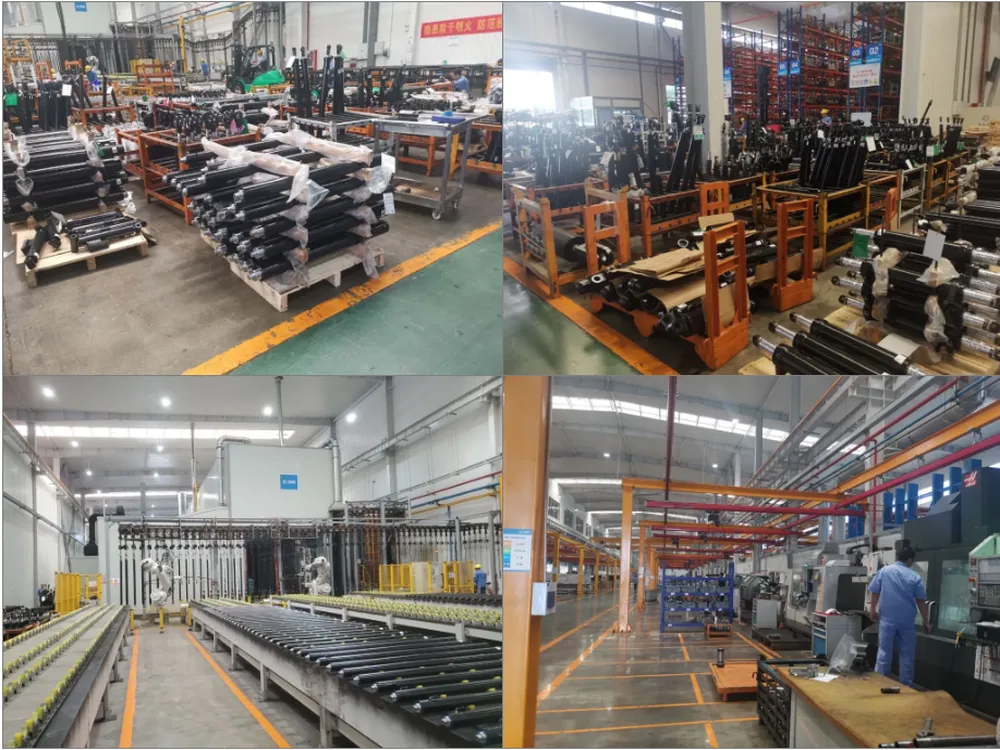Hydraulic Cylinder Manufacturer
HIGH QUALITY PRECISE MANUFACTURER &SUPPLIER
Professional production and manufacturing of high-quality hydraulic cylinders
Our company specializes in the production and sales of hydraulic cylinders, catering to the diverse needs of the industrial sector. We pride ourselves on delivering high-quality hydraulic cylinders that are precision-engineered and built to last. Our cylinders are renowned for their reliability, durability, and exceptional performance, making them a preferred choice for numerous applications across various industries.
With a team of experienced engineers and a state-of-the-art manufacturing facility, we ensure that each cylinder meets the highest standards of quality and performance. We also offer customized solutions, tailoring our products to meet the specific requirements of our clients.
Committed to excellence and customer satisfaction, we strive to maintain long-term relationships with our clients by providing prompt delivery, exceptional service, and continuous support. Whether you need a single cylinder or a bulk order, we are here to fulfill your requirements efficiently and effectively.
Advantages of hydraulic cylinders compared with air cylinders
| Feature | Hydraulic Cylinders | Air Cylinders |
|---|---|---|
| Force Output | Can generate much higher force due to the incompressibility of hydraulic oil. | Lower force output because air is compressible. |
| Control and Precision | Offer precise control over speed, position, and force due to the non-compressible nature of the fluid. | Less precise control as air compressibility leads to more variability in performance. |
| Operating Pressure | Operate at higher pressures, typically up to 3000 psi or more, allowing for greater force in a smaller package. | Typically operate at lower pressures (up to 150 psi), limiting the force that can be applied. |
| Load Holding | Better at load holding because hydraulic fluid does not compress, ensuring stability under load. | Poorer load holding due to air compressibility, which can lead to drift in positioning under load. |
| Speed Range | Capable of a wider range of speeds, easily controlled through valves and pumps. | Generally limited to faster operations; slower speeds can be harder to control precisely. |
| Efficiency | More energy-efficient for applications requiring high force and precision. | Less energy-efficient, especially in high force applications, due to energy lost in compressing air. |
| Installation | More complex installation due to the need for a hydraulic power unit and fluid reservoir. | Simpler installation, as they require only an air supply, which is easier to route than hydraulic lines. |
| Maintenance | Require more maintenance due to potential for fluid leaks and contamination of the hydraulic fluid. | Require less maintenance, though they are sensitive to moisture and particulate contamination in the air supply. |
| Cost | Generally more expensive due to more complex components and the hydraulic system. | Less expensive initially due to simpler design and components. |
| Environment and Safety | Potential environmental hazard due to hydraulic fluid leaks; however, they are better suited for harsh environments. | Cleaner operation with no risk of fluid leaks, but can be noisy and less suited for environments where cleanliness is critical. |
Hydraulic cylinders for sale
-
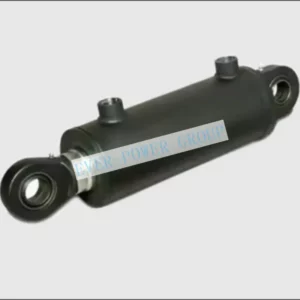
Factory Direct Sale Customized Mini Stainless Hydraulic ram Cylinder Excavator cylinder
-
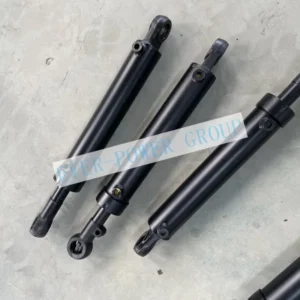
High-quality factory Direct Sale Customized Agricultural vehicle hydraulic cylinder
-
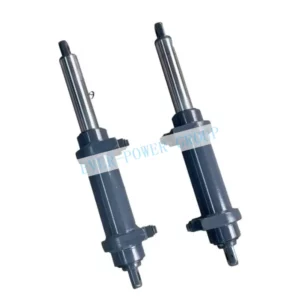
Hydraulic Cylinder New Design Special hydraulic cylinder for forklift steering
-

Hydraulic cylinder Off-road forklift special cylinder forward tilt cylinder small double acting hydraulic cylinder
-
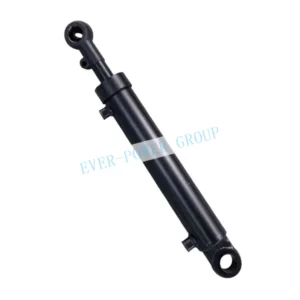
Manufacturer direct sales of hydraulic cylinder loader special cylinder steering cylinder
-
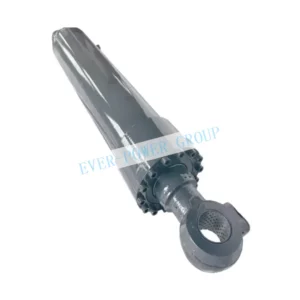
Sizeable hydraulic cylinder 100t hydraulic cylinder car lifter hydraulic Hydraulic cylinder
Main areas of application of hydraulic cylinders
Construction machinery field
Hydraulic cylinders are widely used in various types of construction machinery, such as excavators, loaders, bulldozers, etc. They are used to control the movement of mechanical arms, bucket rods, bucket teeth and other components to complete earthmoving operations, loading and unloading materials and other tasks.
Metallurgical equipment field
In the metallurgical industry, hydraulic cylinders are often used to drive and control various smelting, rolling, handling and other equipment and machinery to ensure the continuity and stability of the production process.
Agricultural machinery field
Hydraulic cylinders are increasingly used in agricultural machinery, such as harvesters, tractors, etc. They are used to realize mechanical lifting, turning and other actions to improve agricultural production efficiency.
Construction machinery field
In the construction industry, hydraulic cylinders are often used in concrete pump trucks, forklifts, pile drivers and other equipment. They help these equipment complete various construction operations such as concrete delivery, material handling, foundation treatment, etc.
Aerospace field
In the aerospace field, hydraulic cylinders are used to control various rudder movements of the aircraft, such as landing gear, braking systems, etc., to ensure the safe takeoff, landing and stability of the aircraft during flight.
Shipbuilding field
In shipbuilding, hydraulic cylinders are often used to control equipment such as steering gears, anchor windlass, hatch covers, etc., to realize the functions of navigation, docking, cargo loading and unloading of ships.
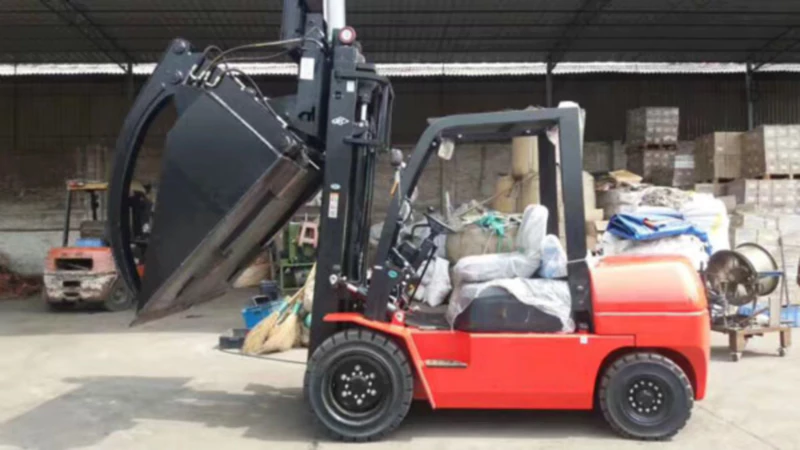
What is a hydraulic cylinder?
A hydraulic cylinder is a hydraulic actuator that converts hydraulic energy into mechanical energy and performs linear reciprocating motion (or swing motion). It has a simple structure and reliable operation. When using it to achieve reciprocating motion, the deceleration device can be eliminated, there is no transmission gap, and the movement is smooth, so it is widely used in the hydraulic systems of various machinery. The output force of the hydraulic cylinder is proportional to the effective area of the piston and the pressure difference on both sides; the hydraulic cylinder basically consists of a cylinder barrel and a cylinder head, a piston and a piston rod, a sealing device, a buffer device and an exhaust device. Buffering devices and exhaust devices depend on the specific application, and other devices are essential.
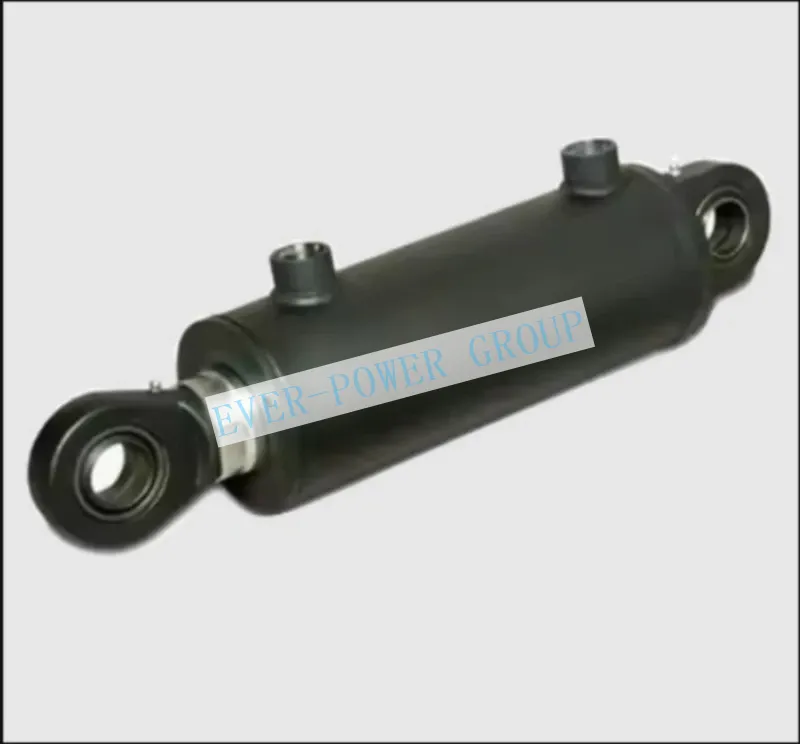
Different types of hydraulic cylinders
Piston hydraulic cylinder: The piston hydraulic cylinder has a single piston rod, and the inlet and outlet ports at both ends can pass pressure oil or return oil to achieve bidirectional movement. This structure enables the piston hydraulic cylinder to produce equal thrust or pull in two directions to complete reciprocating motion.
Swing hydraulic cylinder: Swing hydraulic cylinder is an actuator that outputs torque and achieves reciprocating motion. It is also called a swing hydraulic motor. It has the form of single blade or double blade. The blades and the rotor are connected together. According to the direction of oil inlet, the blades will drive the rotor to swing back and forth. This structure enables the swing hydraulic cylinder to output larger torque and is suitable for situations where rotation or swing motion is required.
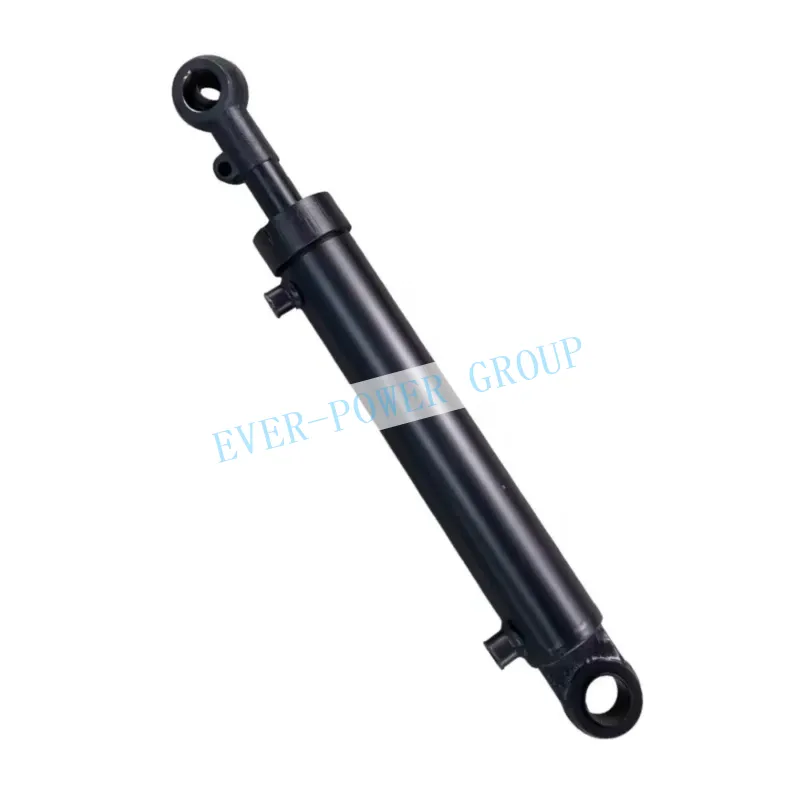
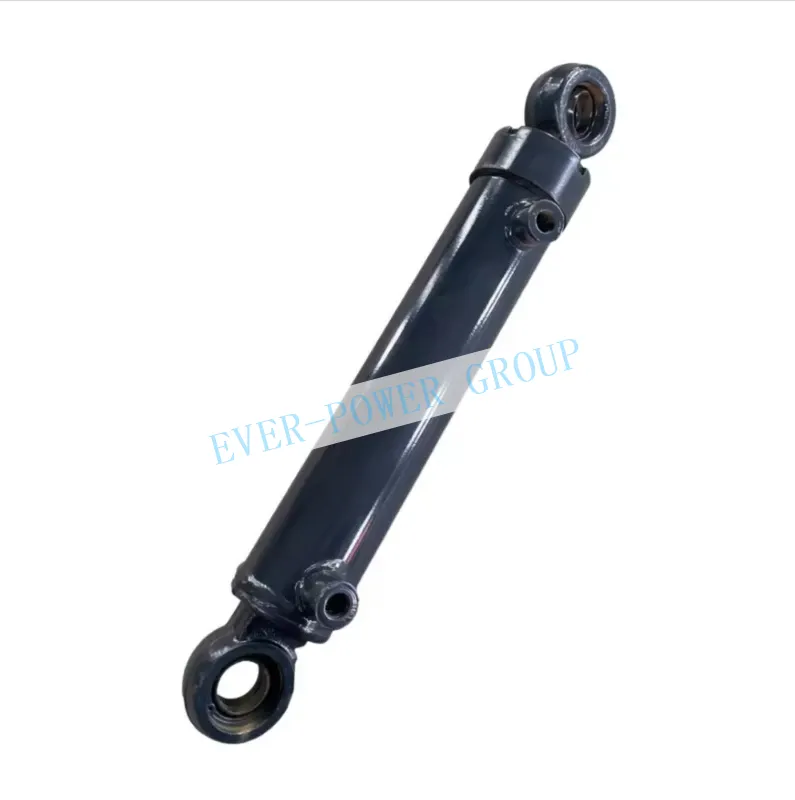
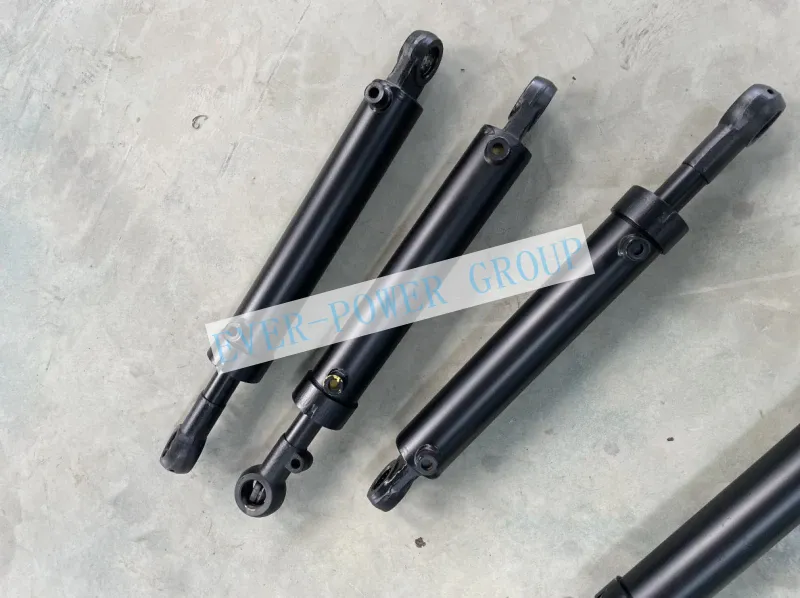
The main structural parts of the hydraulic cylinder
Cylinder barrel: This is the main part of the hydraulic cylinder. It is usually made of high-quality carbon structural steel forgings to ensure the uniformity of the material. The cylinder barrel, cylinder head, piston and other components together form a closed cavity to contain hydraulic oil and push the piston to reciprocate through the pressure of the oil.
Cylinder head: The cylinder head is installed at both ends of the hydraulic cylinder. It is closely combined with the cylinder barrel to form a sealed oil chamber. The cylinder head is usually provided with inlet and outlet ports for the circulation of hydraulic oil to drive the piston.
Piston: The piston is the key moving part in a hydraulic cylinder. It is located inside the cylinder and performs reciprocating motion within the cylinder through the pressure of hydraulic oil. The effective working area of the piston directly affects the force and movement speed of the hydraulic cylinder.
Piston Rod: The piston rod is connected to the piston, passes through the cylinder head and extends outward to connect an external load or actuator. The piston rod is subjected to thrust, tension or bending moment during operation, so its surface roughness, straightness and roundness are required to meet appropriate standards.
Sealing device: The sealing device is used to ensure the sealing of the hydraulic oil between the cylinder barrel and the piston rod to prevent oil leakage. This usually includes a sealing ring or band between the piston and cylinder barrel, and a seal where the piston rod passes through the cylinder head.
Buffer device: When the piston and piston rod move at high speed under hydraulic drive, they generate large momentum. In order to avoid shock and noise caused by mechanical collision between the piston and the cylinder head or cylinder bottom, hydraulic cylinders are usually equipped with buffer devices. These devices slow down the piston as it approaches the end of its stroke, allowing for a smooth stop.
Exhaust device: There may be air in a newly assembled hydraulic cylinder or a hydraulic cylinder that has not been used for a long time, which will affect the normal operation of the hydraulic cylinder. Therefore, hydraulic cylinders are usually equipped with an exhaust device to discharge the air inside during operation.
Characteristics of hydraulic cylinders
Simple structure and reliable operation
The basic structure of the hydraulic cylinder is relatively simple, mainly composed of cylinder barrel, piston, piston rod and other parts, which makes its manufacture and maintenance relatively easy. At the same time, because its working principle is based on the incompressibility of liquid and the characteristics of uniform pressure transmission, the hydraulic cylinder shows a high degree of reliability when working.
Smooth movement
Due to the certain lubricity of hydraulic oil, the hydraulic cylinder can achieve smooth movement when working. This helps reduce mechanical shock and vibration, improving equipment stability and service life.
Large output force
Hydraulic cylinders can produce large output force, mainly due to the high pressure of hydraulic oil. By increasing oil pressure, hydraulic cylinders can easily drive heavy loads or perform difficult jobs.
Good buffering performance
Hydraulic cylinders are usually equipped with a buffering device that can slow down the movement of the piston when it approaches the end of its stroke and achieve a smooth stop. This helps prevent mechanical collisions and impacts, protecting equipment and operator safety.
Routine maintenance and upkeep of hydraulic cylinders
In order to ensure the normal operation of the hydraulic cylinder, routine maintenance and upkeep is crucial. Here are some key maintenance measures:
1. Daily inspection:
Regularly check the hydraulic cylinder for leaks to ensure a good seal.
Observe the operating status of the hydraulic cylinder to ensure that it is working normally and has no abnormal vibration or noise.
Check the sound and temperature of the hydraulic cylinder when it is running to make sure it is within the normal range.
Inspection of the piston rod is also essential to check for scratches and adhesion of contaminants.
The installation part of the hydraulic cylinder also needs attention to check whether there is looseness, cracks, bite, deformation, etc.
2. Regular maintenance:
Tighten the connecting screws regularly to ensure the stability of the hydraulic cylinder.
According to the specific working conditions of hydraulic equipment, seals should be replaced regularly to prevent leakage.
Keep hydraulic cylinders clean to prevent dust, lint, and dirt from entering the system.
Clean and replace the oil filter element regularly to ensure the cleanliness of the oil.
Regularly check the cleanliness of the hydraulic oil. If it meets or exceeds the specified cleanliness standards, the hydraulic oil should be replaced in time.
3. Safe operation:
During the maintenance of hydraulic cylinders, attention should be paid to safe operations, and protective measures are required when using special tools to disassemble and assemble, and to adjust the position of the piston.
4. Lubrication and cleaning:
The friction between the piston and the cylinder barrel of the hydraulic cylinder requires regular lubrication to reduce wear.
Clean the hydraulic cylinder regularly to remove impurities and dirt and keep its interior clean.
5. Avoid repetitive operations:
During use, unnecessary repetitive operations should be avoided to reduce the risk of wear and failure of the hydraulic cylinder.
Why choose our company?
1. High-quality products: Our company is committed to providing the highest-quality Hydraulic Cylinder. Our products are precision-engineered and manufactured using advanced materials to ensure durability, reliability, and consistent performance.
2. Comprehensive Service: We pride ourselves on providing excellent customer service. Our professional team is ready to answer your questions, provide technical support, and provide solutions tailored to your needs.
3. Competitive Prices: Our company offers competitive prices without compromising quality. We believe in creating value for our customers and work hard to ensure our products fit every budget.
4. Excellent after-sales support: We know a product is only as good as the support you receive after purchasing it. Our company provides comprehensive after-sales services, including timely repair, replacement, and maintenance, ensuring that your Hydraulic Cylinder are in optimal condition for a more extended period.
5. Rich product range: Our company provides a variety of Hydraulic Cylinder shafts to meet different applications and requirements. We can provide you with the right product.
